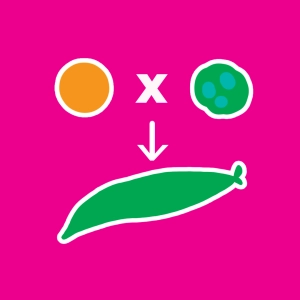 Mendel's Experiment (di-hybridism)
Mendel's Experiment (di-hybridism)
Gregor Mendel’s scientific work (1822-1884) and the publication of his discoveries (Experiments in Plant Hybridisation - 1865) mark the beginning of genetics (the study of heredity and genes). Using his now famous scientific approach, integrating a statistical tool, Mendel studied the transmission of traits in vegetable plants. He chose the pea (pisum sativum) that satisfied all of his requirements. The animation presented here recaptures the experiment on dihybridism. After stutudying the descendants of a P generation possessing one distinct characteristic (monohybridism), he artificially pollinated two varieties of peas from pure lineages each with distinct characteristics. One with the "smooth and yellow seed" characteristics, and other with the "wrinkled and green seed" characteristics. The descendant (F1) only possessed smooth yellow seeds.
He followed the experiment carrying out the autopollination of generation F1. Just like in his monohybridism experiment, the reappearance of constant proportions of "wrinkled seeds" and "green seeds" characteristics were observed in the F2 descendant.
Through his observation that these two characteristics are independantly transmittied from one to another, Mendel announced the principle of independant assortment in gamete production (gamete law of purity).
